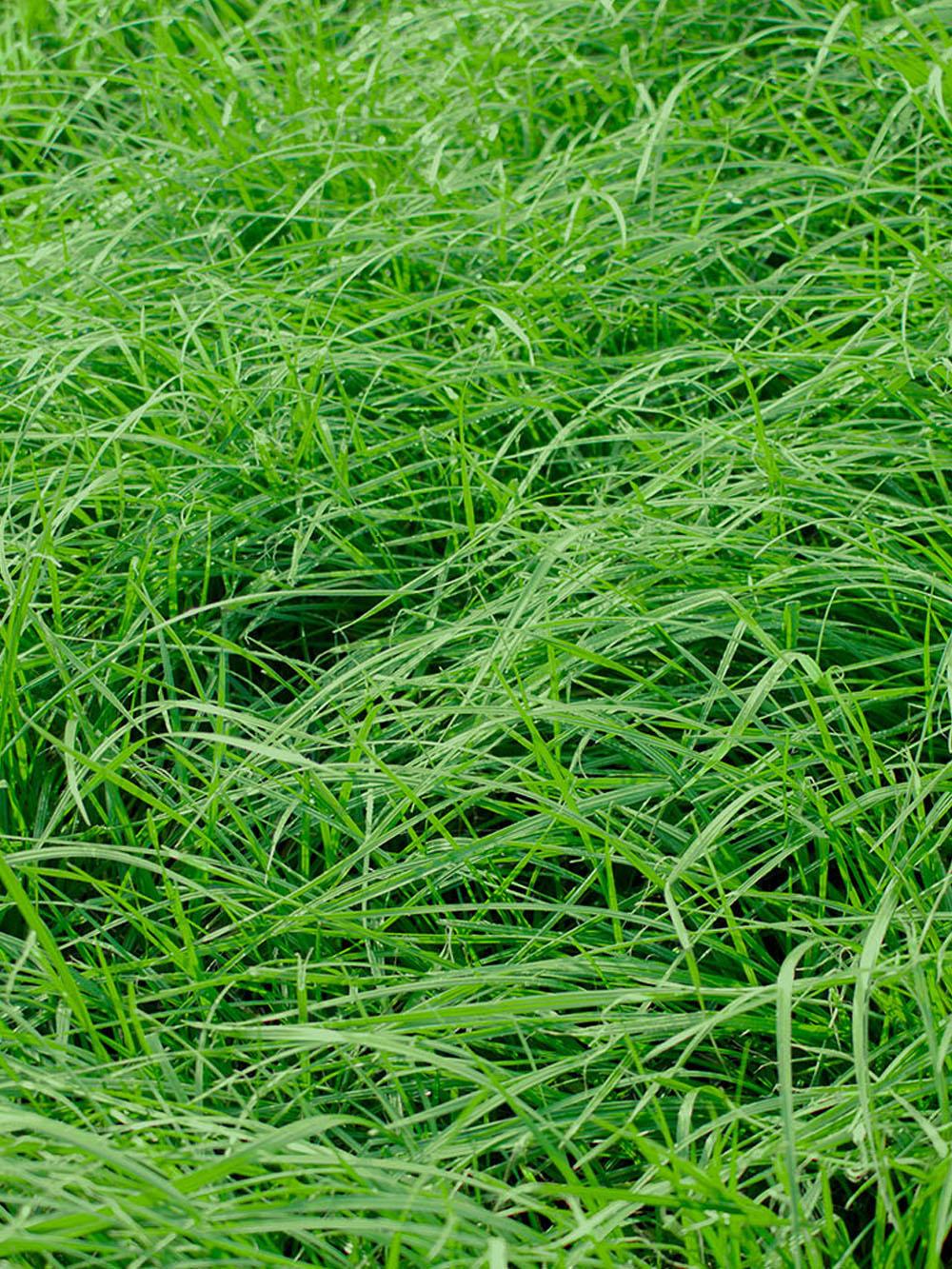Festuca arundinacea

Kentucky 32
Kentucky 32 tall fescue was developed by OreGro research. Beginning with a base of Kentucky 31 maternal plants, these were crossed with three superior tall fescues, and went through three cycles of selection. Tested around the country for forage applications, Kentucky 32 is unique in that it has the persistence of Kentucky 31 and will perform well as a forage grass in those regions where both summer and winter can be especially tough. Relying on superior genetics for plant strength and vigor, Kentucky 32 and its vigorous growth, out-competes weeds, diseases, and is endophyte free
Key features
- Always take a soil test and consult your local extension service or fertilizer dealer for specific recommendations.
- Sowing: depending on the results of the soil test, a complete fertilizer such as 16-16-16 is helpful for establishment.
- Correct soil acidity, best between 5.5 and 7.
- A minimum of 30-40 units of nitrogen after each grazing or cutting will maximize forage produc- tion.
Segment
Forage
Category
Tall Fescue
Species
Fescue, Tall
Sci. Name
Festuca arundinacea
Anther Color
Yellowish Green
Auricles
Absent
Basal Hairs
Absent
Botanical Name
Tall
Branch Pubescence
Glabrous
Crown Rust
Not Tested
Emergence (Days)
14
Flag Leaf Length
Long
Flag Leaf Width
Wide
Growth Habit, Fall
Semi-Erect
Leaf Blade Folding
Open
Leaf Blade Margins
Smooth
Leaf Color
Medium Light Green
Leaf Length
Long
Leaf Rust
Not Tested
Leaf Sheath Colour
White
Leaf Spot
Not Tested
Leaf Width
Wide
Lemma Length
Short
Lemma Pubescence
Absent
Lemma Texture
Smooth
Lemma Width
Narrow
Maturity
Medium Early
Net Blotch
Not Tested
Palea Length
Absent
Palea Pubescence
Absent
Panicle Attitude
Not Erect
Panicle Color
Green
Panicle Length
Medium
Panicle Shape
Narrow Tapering
Panicle Type
Intermediate
Pelea Width
Absent
Pink Snow Mold
Not Tested
Plant Height
Very Tall
Ploidy
Hexaploid
Powdery Mildew
Not Tested
Rhizomes - Creeping Habit
Absent to Very Weak
Seed Length
7mm
Seed Size
Large
Stripe Rust
Not Tested
Time to Flowering
Medium
Waxy Bloom on Leaf
Absent
Winter Hardiness
Moderately Resistant
Approx. Seeds/Kg.
499400
Approx. Seeds/Lb.
227,000
Seeding Depth (cm)
0.635-1.27
Seeding Depth (Inches)
1/4-1/2
Seeding Rate - Alone/New (Kg./Hectare)
28-34
Seeding Rate - Alone/New (Lbs./Acre)
25-30
Planting Times
Spring, Late Summer-Early Fall
Seeding Rate - Mixes (Kg./Hectare)
6-17
Seeding Rate - Mixes (Lbs./Acre)
5-15
Livestock
Alpaca/Llama ,
Cattle ,
Goats ,
Horses ,
Sheep
Usage
Hay ,
Silage ,
Pasture ,
Erosion Control
Winter Hardiness
6
